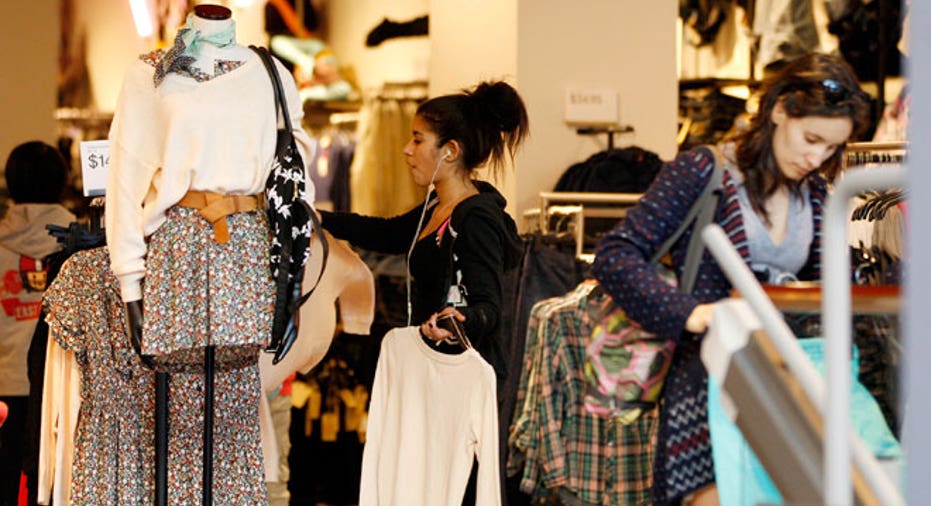Ways to Cut Clothes Shopping Costs

If you've ever experienced the "shopper's high," that dopamine-induced feeling of pleasure after snagging something new, you know how powerful the urge to add to your wardrobe can be. But chances are no matter how many clothes you have in your closet, at some point you've stood in front of it and thought, "I have nothing to wear."
Likening our wardrobes to the Pareto principle, we tend to wear 20% of our wardrobe about 80% of the time -- the rest of it is mostly taking up space. Yet we keep adding to it as we're lured to the mall by sales, discounts and even boredom. To curb this spending, a number of groups have popped up in recent years, including The Great American Apparel Diet -- participants vow not to shop for apparel for a year -- and Project 333, which challenges people to choose 33 items of clothing, accessories, jewelry, outerwear and shoes to wear for three months.
Even if you don't have more pairs of shoes than there are days in the year, you can still learn something from these shopping dieters about spending more strategically. Here's their advice.
Take inventory of what you have. One of the most important techniques in maximizing your wardrobe is learning what it already contains. "If you take a step back and look at what all you have and how the pieces work together, it brings to the forefront the idea that you might not necessarily need as much as you have," says Justin Hamlin, an IT consultant and blogger in Fishkill, N.Y., who participated in Project 333.
"You don't have to go out and find something that matches those pants because you probably already have something in your wardrobe that fits."
Everyone has favorite pieces, and this can give you a good clue as to what you should buy in the future. "Spend some time looking at the things you wear over and over again," says Sally Bjornsen, founder of The Great American Apparel Diet.
"What are the outfits you feel best in? Pay attention to that and buy more of that." If you look in your closet and notice that you never wear those wool sweaters because they're itchy, don't kid yourself into thinking the next one you see on the shelf, no matter how pretty the color or nice the fit, is going to be any different.
Buddy up. In the same way that having a fitness buddy is proven to help you work out more, being more conscious about your clothing consumption is easier when there's someone else experiencing it, too.
"Support from other (people) who know precisely what you're going through is very meaningful and important," says Jill Chivers, self-described shopaholic and founder of Shop Your Wardrobe, an online program that helps women develop a healthier relationship with shopping. When going through her own year-long shopping fast, she committed to blogging about it twice a week to stay accountable.
Laura de Jong, creator of the Free Fashion Challenge, in which fashion professionals and students stop buying clothes for a year, agrees that finding like-minded people is essential. She recommends swapping parties with friends as a good way to get something new without spending more.
Get creative. "Fashion is not about shopping; it's about creativity and quality," says de Jong, who points toward DIY blogs for great examples of budget-friendly ways to change up your look. "Challenge yourself to come up with a creative solution if you feel the urge to buy something new."
Accessories can be a huge help with this. A black dress paired with a diamond necklace and crystal headband will have a very different look than if you add a cardigan and chunky turquoise earrings.
"Examine your accessories and see how accessories work with existing clothing," Bjornsen says. "You'd be amazed how many outfits you can change up by adding a scarf or belt."
Reorganize your closet. Some people find it helpful to organize by color, while others get the most mileage out of putting all the pants in one place, shirts in another, etc. Whatever scheme makes sense for you, be sure everything is accessible. "We don't wear clothing we can't see," Chivers says. If you have a small space, that might mean taking photos of items that have to be boxed and putting them on the outside of the container so you know what's inside.
Try a wardrobe diet. You may not go a year without shopping, but even a small break can help put into focus your clothing habits, mistakes and hang-ups. De Jong likens it to a vacation. " When you've been away from your daily routine for a while, it's much easier to define what you really want and need in your life," she says. "I think it's the same when you do a shopping sabbatical."
And who knows? It may even transform your outlook -- and shopping habits -- for good. "Now I'm a changed person," Bjornsen says. "I still like clothing, but I'm not obsessed with it like I was."



















